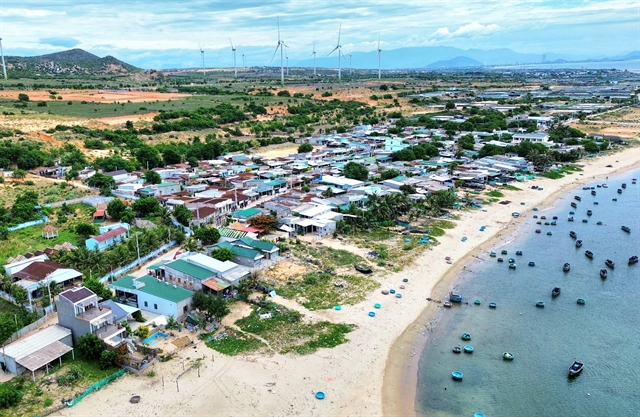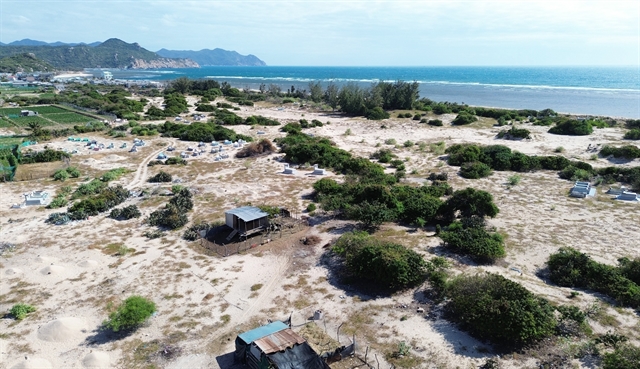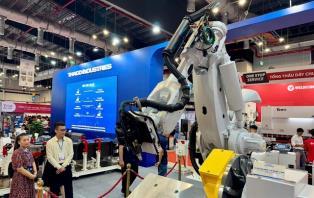Việt Nam needs tailored mechanisms to advance nuclear power development
Experts say more tailored mechanisms and comprehensive, concrete solutions will be needed to meet the goal of reaching 6,000MW of nuclear capacity by 2030.

Việt Nam has fired the starting gun on its nuclear ambitions with the adoption of a landmark resolution by the ruling Communist Party, known as Resolution 70, which sets a target of 6,000MW of nuclear capacity by 2030 to power the country’s next phase of growth.
Experts, however, caution that tailored mechanisms and concrete solutions will be essential to clear bottlenecks and unlock opportunities in the energy sector.
Ngô Đức Lâm, former deputy director of the Institute of Energy under the Ministry of Industry and Trade, noted that the Party's earlier energy policy, known as Resolution 55, issued in 2020, focused on renewable energy but overlooked nuclear power.
Resolution 70, released on August 20, 2025, marks a significant shift by explicitly calling for the rapid restart of Việt Nam’s nuclear programme and identifying nuclear power as a crucial baseload source to stabilise the national grid, according to Lâm.
Resolution 70 directs urgent steps to resume the Ninh Thuận 1 and 2 projects [cancelled in 2016], with the selection of advanced technology and partners, and a target of operations between 2030 and 2035. It also mandates a flexible approach including technology mastery, absolute safety, and domestic capacity building.
Nguyễn Quốc Việt, former deputy director of the Vietnam Institute for Economic and Policy Research, highlighted the resolution’s emphasis on a clear roadmap for both large projects like Ninh Thuận 1 and 2, and smaller-scale nuclear initiatives. It also pledges special mechanisms and resources to ensure success.
Petrovietnam, the state-owned enterprise tasked with the Ninh Thuận 2 project, identifies financing as a major hurdle.
Nguyễn Thanh Bình, head of Power and Renewable Energy Division, explained that the US$10 billion-plus cost of a 2,000MW plant would exceed the capacity of any single enterprise or domestic bank. Cost overruns, common in nuclear projects globally, would pose further risks.

Beyond finance, challenges include technology selection, safety and developing a certified domestic supply chain. Bình said Petrovietnam was new to nuclear projects, and building such a supply chain would require long-term, coordinated support from both the government and international partners.
Independent natural resources and environment expert Tô Văn Trường added that technology choices would be closely tied to financing. Many suppliers would be willing to offer advanced technology if it comes with preferential financing packages. Without access to large credit sources, Việt Nam would find it difficult to hold competitive tenders among potential supplier countries.
“Nuclear power financing is unique, with payback periods stretching over decades, high risks, strict safety requirements, and tight regulatory oversight. Capital costs are typically higher than for conventional power projects,” Trường explained.
A further challenge is human resources.
“Petrovietnam lacks experience and specialised personnel in nuclear energy, a field that requires highly technical knowledge, skills and processes,” Bình said.
He added that building internal capacity, training a workforce, and learning from international experience would be critical for the company to safely and effectively fulfil its role as the project investor.
Special mechanisms needed
Bình said that immediately after being appointed project investor, Petrovietnam set up a steering committee led by the company’s chairman and a dedicated project preparation board to professionalise the work.
To address the challenges in implementing the Ninh Thuận 2 nuclear power project, Petrovietnam is gradually rolling out key solutions, according to Bình. These include researching and proposing special policy mechanisms tailored to the project’s needs.
The group is also working with the Ministry of Finance to negotiate credit agreements with international partners, while developing detailed financial scenarios for the project’s pre-feasibility study. These scenarios are based on special mechanisms already approved by the National Assembly and on financing options proposed by potential partners.
For technology selection, Petrovietnam is working with the Ministry of Industry and Trade to negotiate and determine the project’s construction and investment partners.
To secure human resources, Petrovietnam has drafted a long-term workforce development plan, diversified training channels, and introduced incentive policies to attract and retain qualified specialists and engineers.
Equally important is building public consensus. Petrovietnam regularly holds dialogues with residents in the project area, fulfils its social welfare commitments, and prioritises hiring local workers so that communities see tangible benefits from the project.
However, experts caution that enterprise efforts alone are not enough. Việt Nam still needs additional special mechanisms and a coordinated policy framework to meet the urgent goal of putting the Ninh Thuận nuclear power projects into commercial operation in 2030–2031.
They noted that building a nuclear plant typically takes 10–12 years.
Trường observed that globally, most first-time nuclear projects would rely on concessional loans from technology-exporting countries, backed by government guarantees and bilateral support funds.
He recommended that Việt Nam invite leading international nuclear contractors to submit bids and carry out independent assessments.
Still, with limited financial capacity, Việt Nam might have to prioritise technology from countries willing to provide financing and technology transfer, which could lead to EPC contracts being directly awarded instead of competitively tendered.
Some economists have proposed creating a national nuclear power development fund, seeded with State budget resources, ODA and contributions from energy companies. They also suggest government guarantees for international loans to lower borrowing costs, as well as State-backed long-term power purchase agreements to ensure steady cash flow for investors.
In addition, a credit guarantee fund for nuclear projects, a risk insurance mechanism for technology and operations -- potentially with State co-payments -- and a financial liability cap could help mitigate the impact of force majeure events.
Currently, revised investment proposals for the Ninh Thuận 1 project, led by Việt Nam Electricity (EVN), and the Ninh Thuận 2 project, led by Petrovietnam, are being finalised for submission to the relevant authorities.
The National Assembly is expected to review Ninh Thuận 1 in its October–November 2025 session, while Ninh Thuận 2 is scheduled for consideration no later than May 2026.
Following parliamentary approval, the State Appraisal Council, chaired by the Ministry of Finance, will conduct a final review before submitting the project and site plans to the Prime Minister for approval in 2026. VNS





